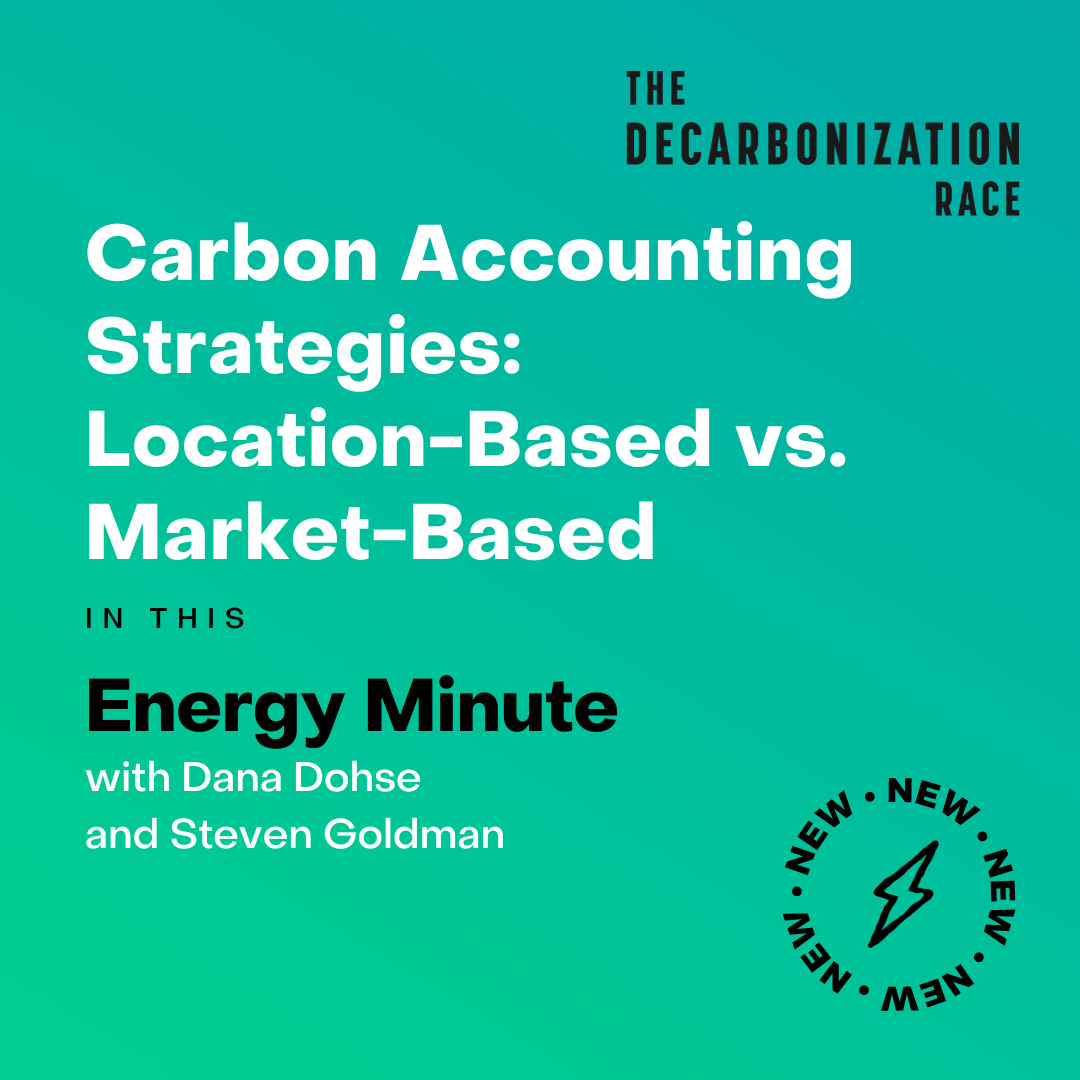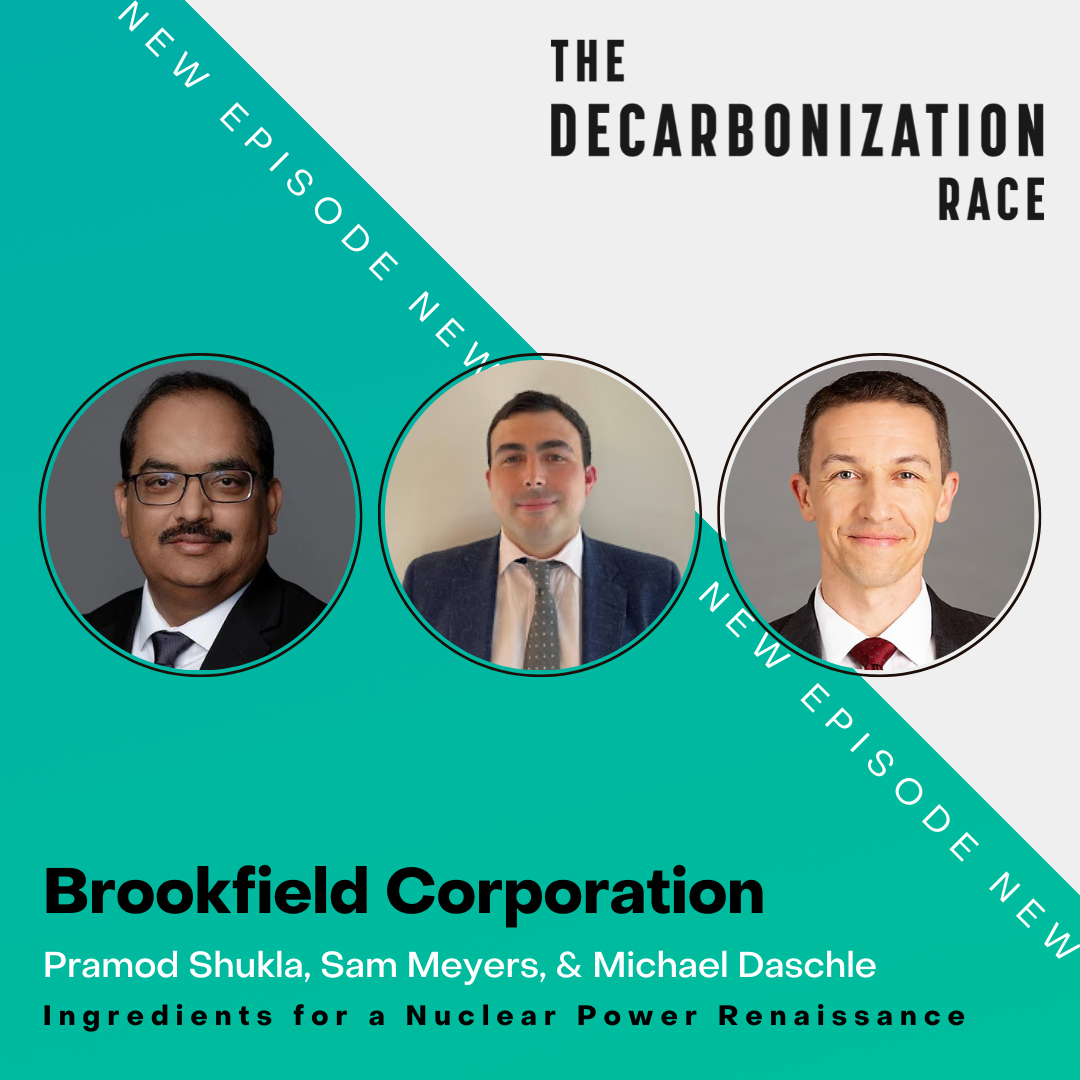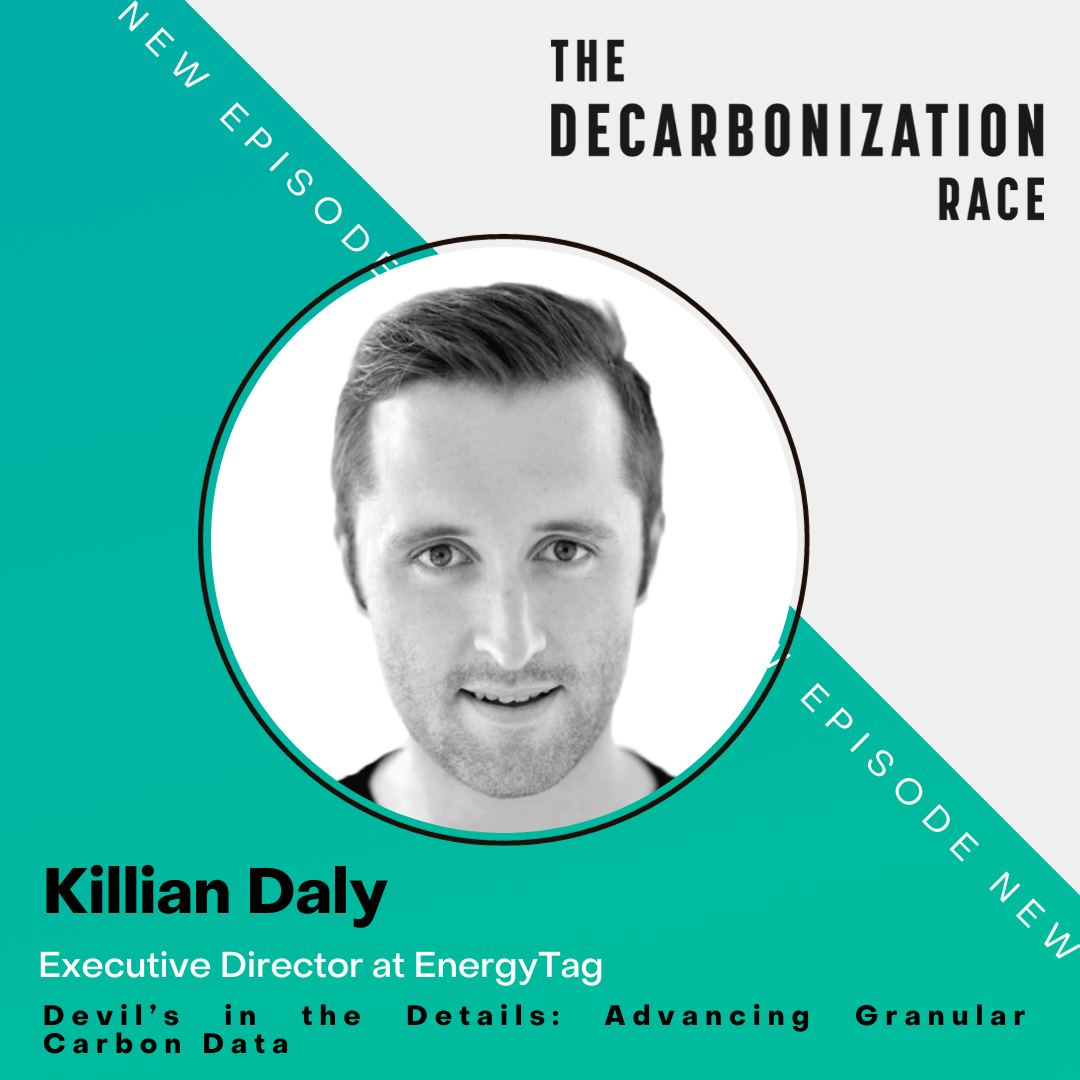Energy Minute: Carbon Accounting Strategies: Location-Based vs. Market-Based
There are 2 core approaches when it comes to counting emissions from procured electricity (i.e., Scope 2 emissions): market-based and location-based carbon accounting. Is one better than the other? How can you use each (or both) to your benefit when working toward your clean energy goals? In this Energy Minute, Dana and Steve discuss the pros and cons of both methods, and how granular carbon accounting data fits in, so you can assess how best to work toward your net zero goals

There are 2 core approaches when it comes to counting emissions from procured electricity (i.e., Scope 2 emissions): market-based carbon accounting and location-based carbon accounting. Is one better than the other? How can you use each (or both) to your benefit when working toward your clean energy goals?
In this Energy Minute, Dana and Steve discuss the pros and cons of both methods, and how granular carbon accounting data fits in, so you can assess how best to work toward your net zero goals.
Resources
- Bloomberg News, “What Really Happens When Emissions Vanish”
Key Takeaways
- Supply and demand are limiting factors when it comes to location-based carbon accounting. For example, urban areas like New York City have a large energy demand, but only so much space for solar panels, wind farms, etc.
- Granular data helps you understand the relative carbon impact of your company’s energy procurement and allows you to make the smartest, most impactful decisions with your sustainable energy procurement budget and processes.
- Understanding the difference between location-based and market-based approaches enables you to choose which method (or both) to use for maximum impact and avoiding potential greenwashing claims.
Transcript
Dana Dohse: Welcome to this week’s Energy Minute, brought to you by Cleartrace. I’m Dana Dohse.
Steve Goldman: And I’m Steve Goldman.
Dana Dohse: In this episode, we’re delving into the differences between two schools of carbon accounting thought, location-based versus market-based accounting for Scope two carbon emissions. So let’s get into it.
So market-based calculations are based on the electricity that organizations are emitting onto the grid, and it takes into account various forms of renewable energy purchasing, using instruments known as renewable energy credits, or REC, which is a topic we’ve delved into before on previous energy minutes.
Basically, you look at your annual electricity emissions and you tally them up and understand kind of what’s your net carbon impact, and then corporations can buy instruments such as RECs to offset those emissions, looking at that annual number, and then they report that to the greenhouse gas protocol or the CDP, or kind of whoever they decide to report.
What’s really important about the market-based side of it is that it’s not tied to where your actual physical facilities are, or specifically what region of the grid you’re on. So location-based accounting is focused on carbon emissions from the region of the grid that you’re actually operating on.
It’s strictly about what are the conditions on the grid in the area in which you’re operating and related emissions from the electricity that you’re procuring on the grid.
Okay, so if I’m a corporation and I’m using location-based accounting, what are my options to reduce my footprint?
Steve Goldman: If you’re using location-based accounting, then your focus is really on how do I either procure more clean energy where I operate or how do I drive some level of decarbonization on the grid, which would be working with the utility to procure clean power through them where utility is working with developers or putting up their own clean energy projects that are delivering clean energy to that specific grid.
Dana Dohse: That seems really hard. Like really hard compared to buying a REC.
Steve Goldman: Well, we’ve talked about it on the podcast previously, how Zone J in New York City, how a lot of companies are gonna be working to procure clean energy. And it is really difficult because there’s only so much space to put solar panels on top of narrow skinny buildings.
There’s only so much room to put down, you know, solar wind farms in the Hudson Valley. And so there are basic physical limitations to the other thing that companies are running into is strictly speaking supply. Not just the projects that are available and delivering power, but the supply chains that are feeding into that.
So wind turbines, solar panels, and all the related electrical equipment are in high demand right now for projects. There’s also the high demand for interconnection where power projects want to get onto the grid, but there’s a queue. They need transmission capacity to be able to get on the grid. They need an interconnection agreement for them to get onto the grid.
And so companies are looking for these projects and they may or may not be moving fast enough. They may or may not be moving in big enough quantity to serve the needs of all of the corporates that are trying to procure in that.
Dana Dohse: I guess it kind of makes sense why people would buy RECs then. I mean, it sounds like if you’ve got a pretty strict goal and you wanna meet that goal and show progress and, you know, even if you’re in line to buy a PPA or maybe you’re in a state that has a regulated market, like what are you going to do?
Steve Goldman: Market-based approaches are definitely the way for companies to at least start biting away at that. They can go buy RECs in the open market if they want to try and have a bit more surety around where and how they’re buying their RECs. They can focus in on the time and location-based properties of that. So are you buying a more carbon-heavy grid where you’re incentivizing new renewable projects to come in?
And by that degree, having additionality impacts? The other thing is a lot of companies, they may not have a lot of access to clean power supply in the areas in which they’re operat.
Dana Dohse: There was a really interesting article from Bloomberg about this topic, and they brought up some really good points about, you know, some of the criticisms that companies are faced when they’re buying RECs.
Steve Goldman: It took kind of a hard swing, I think, at corporates that are relying very heavily on RECs, and to be very fair, I think a lot of energy procurement teams don’t necessarily know the difference of what data they need, what kind of understanding they need around REC procurement in order to make better decisions around the overall carbon impact.
I think in many cases, RECs have been seen as the quick and easy route, and in many ways very cost-effective to reducing emissions on the ledger, but not necessarily translating to the kind of reductions that they need on the grid. But what a lot of companies, because they’ve been leaning on them so heavily, they’re all kind of pulling from the same pool of RECs. As we talk about a lot on here, West Texas wind has been a huge source of RECs that companies from across the US could be utilizing, but it’s having a very marginal impact because if you’re already putting in wind and then you put in more wind and then you put in more wind and you’re just turning turbines and generating RECs in the same region, it’s not doing very much to overall decarbonize grids around the US.
Not in the Southeast. Not in the Midwest, not in whatever region you’re operating.
Dana Dohse: Right, and that’s the beauty of granular data. I mean, you can kind of move from making an honest mistake to being more informed about what it is you’re purchasing and where you’re putting your corporate dollars.
Steve Goldman: Exactly. Granular data lets you make every decision smarter. It gives you the opportunity to understand what the relative worth of your credits is. It helps you understand if you do sign a PPA in your region, what does that do to the relative carbon impact of your company? Versus just drawing power from the grid or having onsite generation.
You can have this understanding of your carbon stack as it were.
Dana Dohse: Oh, I like that concept. Your carbon stack.
Steve Goldman: Exactly. So the Bloomberg article looked in particular at a number of different companies, and I’ll pull one as an example. Cisco had vowed to slash its emissions by 60% from operations-related emissions by 2022 from their 2007 levels.
And they did hit that target. I think they came in at 61%. However, that was based on market-based accounting. If you go to location-based accounting, which is looking at the grid emission factors where they’re operating out of, where all their facilities are, and where they’re drawing grid power from, their emissions went up by 22%.
So you have to understand what are the impacts of where you’re operating and have those changed. So you could have a market where natural gas was in much higher use, for example, that would take regional grid emissions up for that period of time, and that has an effect on you as a company.
Dana Dohse: Absolutely. I mean, this just really highlights the importance of having good data around your electricity procurement.
Steve Goldman: Yeah, I would definitely recommend that people look over, not the headline of the Bloomberg article, but to actually dig into what some of the findings were because it’s sending up a bit of a signal flare for companies that they need to pay closer attention to how they’re going about reducing their emissions or offsetting their emissions.
You have to have a better sense of what they mean, what these credits mean for you, and that it’s not simply an expense. It’s not simply something that you pay it once a year and it wipes out all of your carbon impact. Because overall, we’re trying to have real impacts on the grid. We’re trying to decarbonize grids around the world.
So you have to understand if the money that you’re spending or the energy that you’re procuring translates into real impact.
Dana Dohse: Absolutely. And that’s really why we’re all here on this decarbonization race.
Thanks for joining us for this week’s Energy Minute. For more of the latest news in sustainability and decarbonization, visit cleartrace.io.










